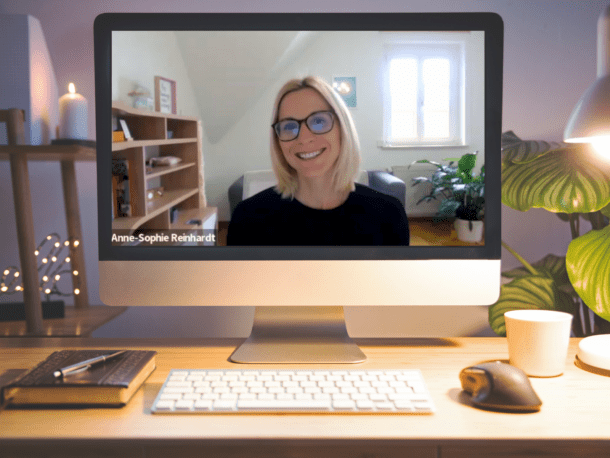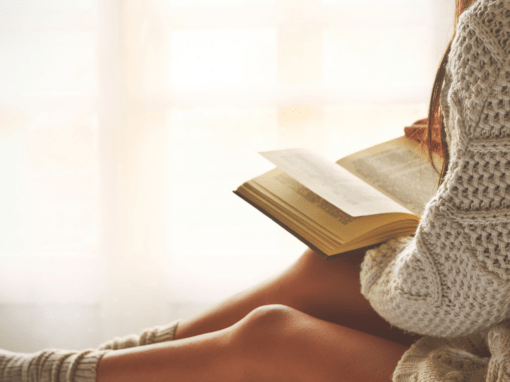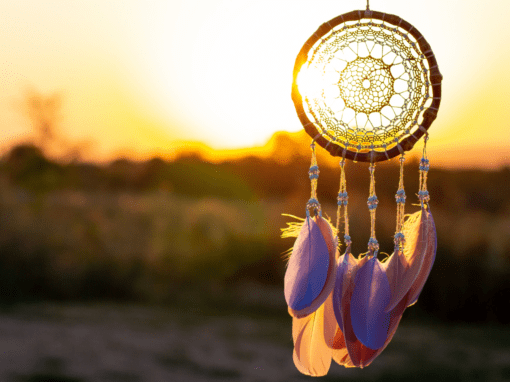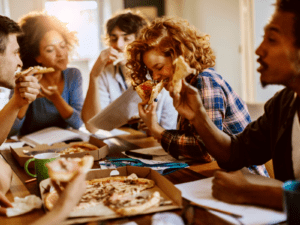I am super excited to launch the first ever (but certainly not the last) Body Image Interview Series here on Make Peace with Food, Your Body & Yourself. In the next 6 days, you’ll hear from 6 incredible women who share their stories of hope, loss, healing, setbacks, detachment and so much more. Each woman has her very own point of view, but all of these women have one thing in common: they use their pain to help you move through yours. That’s courage, bravery and freakin’ aweosme. Enjoy these interviews and posts, comment and share and let them know how their stories impacted you.
We’re kicking off our series with my friend Kaila Prins. I met her through her wonderful podcast (listen to our conversation here) a couple of years ago and she’s been doing incredible work ever since. I’m thrilled that she’s sharing her journey with us here.
“Not my circus. Not my monkeys.”
Growing up, how did you feel about your body?
When I was young, I don’t think I thought all that much about my body. I did have some weird reactions to wearing clothes: I was uncomfortable in pants—everything always felt tight or restrictive in some way, so I only wore billowing shirts, at least one size too big and either elastic pants or overalls. But I really didn’t have a “relationship” with my body other than the fact that I lived in it.
When did your body image struggles start?
Unofficially, I distinctly remember a day when I was in 5th grade, and my ex-stepfather told me that I was getting fat. It was the first time that I noticed that my body was anything other than just a body. That did not, however, deter me from eating 5 garlic rolls at dinner before devouring a whole adult size baked ziti and asking for cookie dough at dessert.
I was unconcerned, but the words, like a virus, lay dormant in my head until such a time as they might be triggered to do the most damage.
The real trouble started at the age of 13. It was the summer of 2001, and my legs were breaking out in hives every single morning at summer camp. My mom suggested that maybe I had, as an allergy test revealed when I was a baby, a sensitivity to soy.
Soy? That was a health food, right? I didn’t eat health food, so I didn’t see the problem. Turns out, soy is in everything. Or at least everything I ate, which was mostly packaged, processed food. I learned how to read labels that summer—and I started developing a serious fear of food. Not only wouldn’t I eat anything that came in a package that had soy in it, but I also refused to eat anything that didn’t come in a package that I didn’t prepare myself. I had to know what was in my food.
That summer, I was also cast as Rizzo in the summer camp production of Grease. During the dance warmups, I noticed that I couldn’t keep up with the ab and leg exercises like the other girls, and I felt ashamed. I started doing extra ab and leg exercises every night before bed. I also got a gym membership, and even though I had no idea what I was doing, I started working out every day.
By July 4, I had lost a ton of weight. And that day, Independence Day, was the day that I ironically became dependent on what I would ultimately come to know as an eating disorder and exercise addiction.
That morning, I got my first period. I put on my first big-girl bikini after learning how to use a tampon (which felt very grown up and dangerous all at once). All of my friends were coming over to my house for a party. The boy I liked had asked me out the day before, and he was going to see my thin body in a bikini and like me more (I assumed).
And I looked at my reflection in the mirror and decided that, whatever I was doing, I was going to do more of it.
What bothered you most about your body?
Nothing bothered me about my body, really…except that it felt too….much. As I got sicker, it wasn’t about “I’m too flabby” or “I have cellulite.” It was literally a feeling of needing to disappear. This, I believe, is the difference between anorexia and plain old disordered eating.
Controlling my body, getting rid of my body, erasing my body was much more important than whether or not I needed to get a six pack.
The funny thing is, after I recovered, my body image issues started cropping up. It was then that I felt like my arms weren’t toned enough, and I needed to buy some caffeine cream to erase my cellulite.
The second time I relapsed, I relapsed specifically because I was obsessing about my body image. I was dating a man who was really into fitness, and he told me about the fitness models whom he thought were sexy. His favorite was Jamie Eason, so while we were doing the long distance thing during grad school, I looked up her diet and exercise regimens (thank you, Google), and started working out in order to “get her body” and surprise my boyfriend when I saw him in November.
When I couldn’t make my body look the way I wanted it to in three months, I broke up with him. I was scared he would be disappointed that I was not sexy enough, that my muscles weren’t large enough, that I hadn’t leaned out. (Never mind the fact that he never explicitly told me to copy Jamie Eason. He had just planted the seed.)
After I was no longer with him, I doubled down on my clean eating and did a 30-day Muscle and Fitness Hers Magazine challenge, and I got my body closer to the “ideal,” but I was never lean enough, never muscular enough, never enough but always too much. By that summer, I dropped out of grad school and was diagnosed with anorexia, even though I was rating 6-7 meals per day. It was EDNOS and an exercise addiction that got me so scarily thin and out of control, but this time around it really was about changing my body, not about erasing it.
What was the moment you knew you had to change something about your body image?
I was suicidal when I dropped out of grad school. I was calling my mother and father and the suicide hotline every day, hysterical. I had no idea what to do with my life. I wanted to do nothing but spend every waking hour in the gym.
I lived for the 30 seconds it took me to eat my protein powder mush, and ached in the self-imposed 3 hours I had to wait for my next “meal.”
I fought with my therapist over whether or not lettuce was a carb until she suggested that I go to a primary care physician to have my vitals taken. The doctor reported back: Amenorrhea. Bradycardia. Potential osteopenia. Anorexic. If I continued down this path, I could die.
Something in me snapped that afternoon, and I think it had something to do with not having my period—the period that had tracked with day 1 of my eating disorder. Something about realizing that I was infertile at the age of 24 opened the floodgates. I left the doctor and went directly to the sandwich counter at the Whole Foods down the street and ordered a turkey sandwich on real bread with real cheese AND avocado spread. I ate the sandwich, sobbing. I felt sick to my stomach for the rest of the day.
It took me years and years of hard work to get to a place where I feel comfortable around food and in my body as it is right now—and it certainly wasn’t linear. The second time I stopped getting my period (after I went vegan for about 9 months) was the final kick in the rear end.
When being a vegan meant being infertile again, I said: enough is enough.
If I want to be healthy, I need to get a grip and fix my relationship with my body so that controlling my food isn’t a bigger priority than having working hormones.
What helped you most during your healing journey?
The first thing: getting a job that had NOTHING to do with fitness or health. I started working at the Apple store in my home town, and I spent 8-10 hours a day fixating on customer service, technology, innovation, and communication. I learned all about business, about mentoring, about training and facilitation. And it had NOTHING to do with my body. It was the best thing that ever happened to me, because working at the store, even though getting a job in retail after having quit my grad program was kind of a kick in the ego, gave me a sense of purpose and a hope for the future.
Second: comedy.
Comedy has been SUCH an important part of my healing journey.
When I was going through my first relapse, listening to the iTunes internet comedy radio station was the only thing that kept me going. And now, instead of listening to health podcasts or reading fitness blogs, I spend my time listening to the Thrilling Adventure Hour and watching @midnight.

The reason I think that comedy was so important to my personal healing journey is because comics often touch on dark and difficult subjects, and they find a way to turn those situations into something worth laughing about. It’s a reminder that life is not bad or unmanageable—it’s just absurd. And it gives me permission to laugh at things that would otherwise consume me with sadness, fear, or regret.
That leads into the third thing: Gratitude.
Back in September of 2013, I started tweeting my gratitude every night. It was an experiment. Could I make a habit out of being grateful? And what would that do for me? Turns out: a lot. Tweeting my gratitude not only gave my accountability (putting it in a public place meant that people would know when I wasn’t practicing my habit), but it also forced me to really dwell on the things I was grateful for. If you only have 140 characters, you have to spend time thinking about how you can be concise and direct, which is a lot more effort than it seems.
It got to a point where, if I was having a bad day, I would start wracking my brain for something to be grateful for from the day, because I knew I had to tweet something.
And the fact that I could always find something to be grateful for made me realize that there’s no such thing as a bad day. There are days where you start to perceive more negative things than positive ones, but it’s only “bad” if you dwell on the negatives.
Tweeting my gratitude gave me the tools to start learning how to calm my anxiety and cope with situations that would otherwise have wrecked me in the past. I ended up creating a 30-day Gratitude Mad Libs game on my website so that others could pick up the practice as well.
What lessons did you learn along the way?
In my relatively short 28 years on this earth, I have had a painful bone tumor removed. I have suffered chronic nerve pain in my ankle. I have had anorexia. I have lost and regained my period twice. I have been hit by an SUV.
And I lived.
Every time and still, I lived.
If nothing else, I have learned that my body isn’t a burden to be controlled or disposed of; it is a vessel that allows me to explore and experience the world.
Who cares if you don’t look like a model or you aren’t “perfect” (whatever that means!) or you don’t like your thighs or whatever it is that’s “holding you back” from living your best life right now?
Truly: what is changing your body really going to do to get you the life that you most desire?
Once your body and your life is recovered, the most important thing you can do is use it to go out and discover what it means to be truly alive.
How do you feel about your body now?
It’s cheesy, but I love it. Sure, there are days when the old hurts flare up. When clothing feels weird and I refuse to wear pants, or I start to freak out because I feel too big or too fat or too awkward or whatever…but that’s just life. Not every day is perfect. Recovery isn’t magic; it’s a reminder that you have the coping skills not to let a day when your breasts and hips are getting in the way be the day that you decide you must destroy them.
I don’t look like I expected myself to look, and I think that’s okay. My body lets me laugh until my sides ache. It lets me feel electricity when I am kissed.
It is strong enough to do crazy things like take pole dance classes. It’s mine, whatever it is, however it looks. And I love it, because I love being life and all of the weird and wonderful things it keeps throwing my way.
What’s one tip you can give readers to finally feel at home in their body?
You have to make your body your home. {Click to Tweet}
I think too many of us feel detached from our bodies, because they’re often written about in the media as these distinct parts that need to be controlled and changed.
Find something that makes you feel electric in your body and go do it—as much as you can. For me, it’s pole dancing and comedy. I like feeling strength, power, and sensuality, and I love to laugh. Yes, I need strong arms if I want to dance, and, yes, my abs get a workout when I’m laughing through a stand up set…but I’m not doing either of those things to be looked at or judged on. I’m just doing them because they feel good, and that’s all that matters.
Go out and discover something that doesn’t have to do with food or fitness or transformation or control, and give yourself permission to do that thing without judgment or fear. {Click to Tweet}
You AND your body, in partnership, not in opposition.
Kaila Prins is a health coach livingin Silicon Valley who works with women who are ready to stop “recovering” from disordered eating and start “discovering” their true identities. A former anorexic and exercise addict herself, Kaila knows intimately the cycle of restrict-relapse-repeat – and while she believes that recovery from an eating disorder is a mixture of consciousness and chemicals, which requires nourishing your body and your soul – too many women get caught up in the food and forget to find themselves. Kaila writes on eating disorders, body image, and recovery at inmyskinnygenes.com, and she hosts a weekly podcast called Finding Our Hunger, where she and her co-host interview the “experts” in fitness, nutrition, and body love to unpack their bags and unashamedly air what they find inside. She also counts characters and not calories on Twitter @MissSkinnyGenes.








